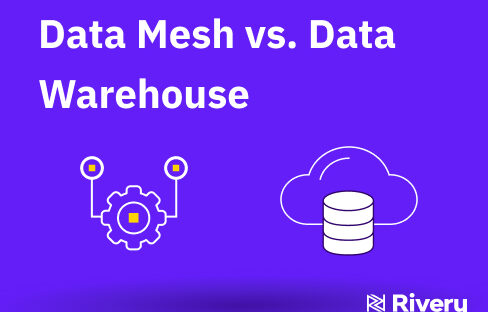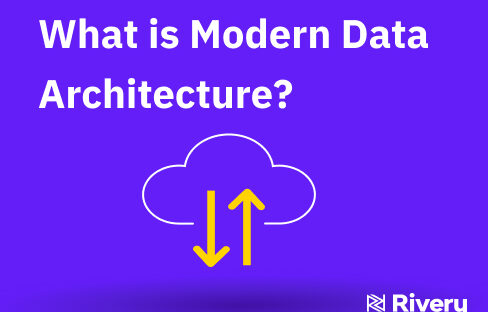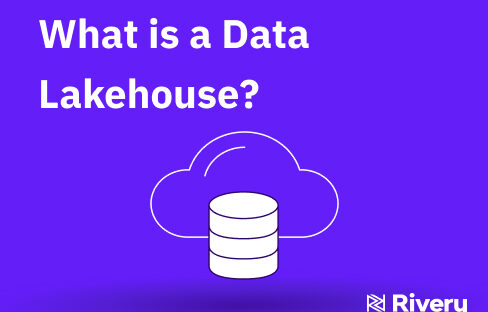Daily, we’re cranking out a staggering 2.5 quintillion bytes of data, a number that’s as hard to wrap your head around as it is to count the zeroes (eighteen of them, in case you were wondering.)
The good news? This avalanche of information isn’t just something to manage; it’s a gold mine waiting to be tapped. If harnessed correctly, it can provide incredible insights, drive innovation, and lead strategic decision-making. We need to find ways to not just manage this data but to turn it into something we can actually use.
Welcome to the world of Data Governance.
What is Data Governance?
Data governance serves as a blueprint for synchronizing people, processes, and technology to guarantee the quality, availability, usability, integrity, and security of data. It’s a system of decision rights and accountabilities and agreed-upon policies which define who can take what actions with what data, when, under what circumstances, and using what methods.
Data Governance vs. Data Management
While data management is concerned with the execution and operation of data handling processes, data governance establishes the strategy, objectives, and policies to guide these processes. Think of it as the instruction manual for turning an untidy stack of puzzle pieces (read: raw data) into a beautiful picture (read: valuable business insights.)
Data Governance Components
But what does the broad umbrella of data governance actually encompass? To make things a little less overwhelming, let’s break it down into basic building blocks :
- Data Quality: Ensuring that data is accurate, reliable, and meaningful for its intended use.
- Data Privacy and Security: Implementing controls and policies to protect sensitive data from unauthorized access or breaches.
- Compliance: Ensuring that data management practices adhere to relevant laws, regulations, and standards.
- Data Lifecycle Management: Overseeing the full lifecycle of data, from its initial creation or collection, through its processing and storage, to its eventual archiving or disposal.
- Data Accessibility and Usability: Making sure that data is readily available to those who need it and that it’s presented in a format that’s useful and understandable.
- Data Policies, Standards, and Procedures: These guidelines and rules form the backbone of data governance, dictating the management and handling of data across the organization.
- Data Quality Management: Another quality custodian, its role is to ensure data reliability and accuracy, thereby bolstering decision-making confidence.
Data Governance Roles and Responsibilities
The data governance framework involves several key players, each with distinct roles and responsibilities:
- Data Owners: These are individuals who have been designated the responsibility of ensuring the accuracy, accessibility, and consistency of data. An example of this role could be a Marketing Director who oversees the marketing data, ensuring its accuracy and consistent definition for strategic decision-making.
- Data Stewards: These are the guardians of data quality. They enforce and implement data policies, standards, and procedures. This role is often assumed by members of a compliance team who ensure appropriate usage of data and uphold privacy regulations.
- Data Custodians: These are the tech guys handling data storage, security, and maintenance. An example of a Data Custodian could be an IT Manager responsible for ensuring the data servers are secure, frequently updated, and run smoothly, thereby guaranteeing safe and readily available storage of data.
Data governance is a team sport – everyone pitches in to bring the data governance framework to life in order to transform the raw data into meaningful and actionable insights.
Navigating Data Governance Frameworks
The good news is that you don’t need to reinvent the wheel, there are several established data governance frameworks that you can adopt and adapt to fit the unique needs of your organization.
Data governance frameworks provide a structured approach to data governance, helping organizations manage and protect their data more effectively. In a landscape as vast and varied as data management, these frameworks can help your organization avoid stumbling into common pitfalls.
Let’s take a look at a few popular ones:
- DAMA DMBOK (Data Management Body of Knowledge): The DAMA DMBOK is one of the most comprehensive data governance frameworks. It provides a detailed overview of data governance elements such as data quality, data architecture, data privacy and security, data warehousing, and business intelligence, etc. The DMBOK also offers a function-oriented view of data governance, providing details on data management functions, roles, and responsibilities.
- DGI Data Governance Framework: The DGI framework focuses on developing strong governance processes. It offers guidelines for defining, implementing, and enforcing data governance policies and procedures. It also includes aspects like data stewardship, data quality, and compliance.
- IBM’s Data Governance Council Maturity Model: IBM’s model is designed to help organizations assess their current level of data governance maturity and plan their growth. The model covers various elements of data governance, including data quality, data risk, business processes, and organizational structures.
- MIT CISR Data Governance Framework: The MIT CISR framework focuses on decision rights and accountabilities. It provides guidelines for determining who in an organization has the authority to make decisions about data and who is accountable for various data-related tasks.
- Gartner’s Enterprise Information Management (EIM) Framework: Gartner’s EIM framework encompasses data governance as part of a broader strategy for managing information across an organization. The framework addresses issues such as data quality, master data management, information policy, business process management, and information strategy.
In essence, these frameworks are designed to help organizations implement data governance strategies that not only protect their data but also elevate its value. Before you decide on a framework, it’s crucial to understand your organization’s data landscape and the specific challenges you’re trying to address with data governance. This will help you choose a framework that best fits your needs.
After selecting a framework, you can tailor it to your organization’s unique circumstances and evolve it over time as your data governance program matures. It’s also essential to have strong executive sponsorship, clear goals, and effective communication strategies to ensure successful implementation.
The Importance of Data Governance in Data Management
Rapid Data Growth and Data Management
As data continues to multiply, managing and making sense of it can be as complex as decoding an alien language. As organizations collect data from multiple sources, they often end up with data silos that stop them from seeing the big picture and getting the most from their data. Plus, they have to grapple with issues like where to store all this data, how to manage it, and how to pull useful insights from it.
That’s where data governance steps in. It’s a game-changer in dealing with the challenges of rapid data growth. With solid data governance in place, organizations are not just better at managing their heaps of data, but they can actually use this data to draw valuable insights.
Ensuring Data Quality and Consistency
Data is telling your business’s story. If the data is not reliable, it’s like reading a book full of plot holes. You’ll end up lost, with no idea where you are heading. That’s exactly what happens when your data lacks quality and consistency – it leads your team to wrong conclusions.
Enter data governance. It sets strict rules for how data is collected, stored, and used, making sure your data is as trustworthy as it can be. It’s like having a fact-checker ensuring your data tells a true, meaningful story that you can confidently use to make business decisions.
Mitigating Risk and Ensuring Compliance
Along with the massive surge of data comes the challenge of managing risks, especially those related to security breaches and regulatory non-compliance. These concerns are not to be taken lightly, as they can lead to significant legal consequences and damage an organization’s reputation.
This is yet another area where data governance plays a critical role. It provides a framework for implementing strong data security measures, which can help prevent unauthorized access and potential data breaches. It also keeps a pulse on ever-evolving data regulations to ensure your organization stays compliant.
Protecting Data Privacy and Security
An integral part of data governance is the incorporation of access controls, data encryption, and audit trails. Audit trails provide a recorded history of data actions, changes, and access, much like a detailed logbook of a system’s data activity. Maintaining audit trails is important for several reasons. It increases transparency by documenting who did what and when, which can be crucial in diagnosing problems or understanding past actions. This transparency not only aids in internal investigations but also plays a vital role in demonstrating compliance during external audits.
Increased Efficiency and Cost Savings
Effective data governance can streamline data processes, reducing redundancies and increasing efficiency. By establishing standard procedures for data management, it eliminates unnecessary duplication of effort and helps maintain a cleaner, more efficient data environment. These optimized practices not only lead to operational efficiency but can also result in significant cost savings, as better data management reduces the time and resources required to handle data, correct errors, and navigate regulatory complexities.
Implementing Effective Data Governance
Successfully implementing data governance requires a playbook. Best practices include securing executive sponsorship, communicating effectively, and integrating it into the company culture. Remember, Rome wasn’t built in a day, and neither is a successful data governance strategy!
Data Governance Best Practices
- Develop a Clear Data Governance Strategy: Start by formulating a strategy that aligns with your organization’s objectives. This strategy should define the program’s scope, identify key stakeholders, set performance indicators, and outline the required tools and technology.
- Start Small and Scale Gradually: Begin with a small data governance project within one department or a specific data type, learn from this experience, and then gradually expand to other areas.
- Secure Executive Sponsorship: Gaining support from top-level management is crucial. This ensures you have the necessary resources and influence to drive data governance initiatives across the organization.
- Define Clear Roles and Responsibilities: Assign specific data governance roles like data owners, stewards, and custodians. Ensure that these roles are well-defined and that individuals are equipped with the necessary skills to fulfill their responsibilities.
- Building a Data Governance Team: Your team should include roles such as data stewards, data custodians, and even chief data officers. Promote cross-functional collaboration and invest in skill development to build a strong, well-rounded team.
- Implementing a Data Governance Framework: Develop a framework that suits your organization’s needs, involving the definition of processes, policies, and procedures. It’s akin to setting up a board game’s rules where the grand prize is invaluable insights.
- Establish Data Standards and Policies: Develop guidelines on managing, maintaining, and using data. These should cover areas such as data quality, privacy, access, and lifecycle management.
- Leverage Data Governance Tools: Use technology to your advantage. Data governance tools can help automate tasks like data quality checks, cataloging, and policy enforcement.
- Provide Ongoing Training: Data governance is an ongoing effort. Provide your team with continuous training on the latest best practices and technologies in this area.
- Monitoring and Maintaining Data Governance: Just like a garden, your data governance initiative needs regular tending. Implement an ongoing strategy for evaluation, adaptation, and improvement.
- Periodic Reviews and Audits: Regularly review your data governance practices and conduct audits to ensure compliance with internal policies and external regulations.
- Promote a Data-Driven Culture: Cultivate a culture that understands the value of data in driving decision-making and business objectives.
- Prepare for Change Management: Implementing data governance will bring significant changes in your organization’s approach to data. Be ready to manage resistance and deploy effective strategies for this change.
Keep in mind that data governance is an ongoing journey that requires continuous refinement and adaptation to the evolving needs of your organization and the broader data landscape.
Future of Data Governance
As we look toward the future, trends such as machine learning and AI will play an increasingly vital role in data governance. As organizations become more data-centric, the role of data governance in managing and leveraging this data effectively will only amplify. Here are some future trends and implications to consider:
Machine Learning and Artificial Intelligence for Data Governance
With the advent and subsequent explosion of machine learning and artificial intelligence, data governance is set to enter a new era. These technologies can help automate many aspects of data governance, from data classification and metadata management to data quality checks and anomaly detection.
By reducing manual work and boosting efficiency, machine learning and AI can make data governance more effective and precise. However, these tools also require governance and human oversight to ensure their algorithms are fair, transparent, and reliable.
Growing Importance of Data Privacy and Security
The increasing number of data breaches and the advent of stringent data protection regulations like GDPR and CCPA are a testament to the growing importance of data privacy and security. In the future, data governance will play an even more crucial role in ensuring that organizations collect, store, and use data in a way that respects individual privacy and complies with legal requirements.
Increasingly Data-Centric Organizations
As more and more organizations become data-centric, data governance will be increasingly vital to manage and leverage data effectively. From improving data quality to facilitating data integration to promoting data literacy, data governance will be key to unlocking the value of data and driving data-driven decision-making.
Data Ethics
As the implications of data use become more profound, a new dimension of data governance is emerging: data ethics. This involves ensuring that data is used not only legally but also ethically. It’s about making sure data is used in a way that respects people’s rights, values, and freedoms, and this will be an increasingly important focus for data governance in the future.
Focus on Integration of Data Sources
With the exponential growth of data sources, the integration and compatibility between these sources are increasingly important. The next big challenge lies in ensuring the compatibility, coherence, and reliability of all data involved, not only the data within an organization but also data coming from external sources.
Enter Rivery. As a leading DataOps platform, Rivery simplifies the complex task of data integration and orchestration. It lets you seamlessly manage all data sources, whether they’re on-premise databases, cloud systems, or third-party APIs, in a user-friendly, code-free or custom-code environment.
Rivery excels at making data from various sources compatible, coherent, and reliable. It eases the process of data ingestion, transformation, and delivery, so your data is always analysis-ready.
Beyond technical integration, Rivery offers end-to-end visibility into your data workflows, empowering quality monitoring, lineage tracking, and data governance policy enforcement, transforming the integration challenge into an opportunity.
Rivery underscores its commitment to data governance with strict security and privacy measures. For further information on these measures, please click here.
Remember, effective data governance isn’t a destination but a continuous journey. By integrating different data sources, ensuring their compatibility, and facilitating thorough data governance practices, Rivery helps you make the most out of your data while maintaining integrity, security, and privacy.
Minimize the firefighting. Maximize ROI on pipelines.





